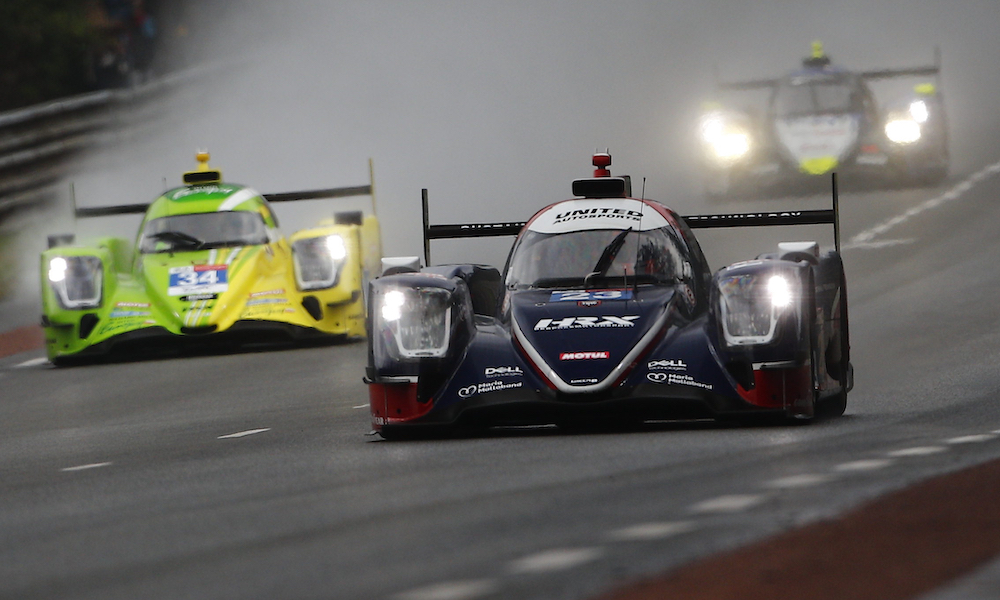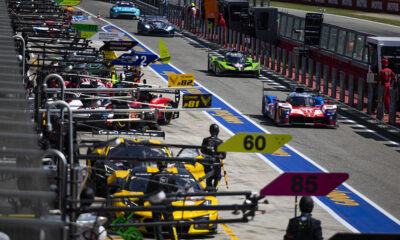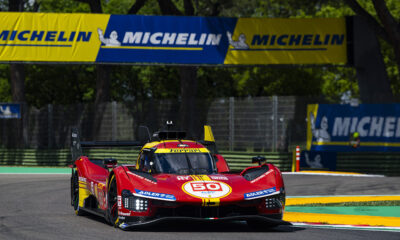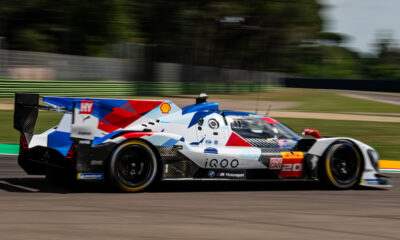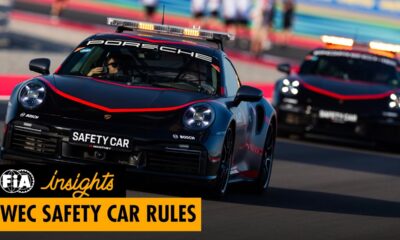Goodyear’s endurance program manager says there was “no real need” for the brand to keep an intermediate tire for transitional wet conditions in its FIA World Endurance Championship LMP2 portfolio.
As reported last Friday, the sole supplier of the LMP2 formula in WEC, the European Le Mans Series and the 24 Hours of Le Mans has removed the intermediate from its range leaving only a ‘medium-plus’ slick compound and a full-wet treaded option.
Mike McGregor told Sportscar365 that Goodyear felt that continuing to carry intermediate sets around the world was unnecessary and that the wet tire is capable of filling the void in the event of drying conditions.
In liaison with WEC organizers the ACO and FIA, Goodyear put the idea of removing the intermediate to a teams’ vote that was passed ahead of the 2022 season.
“We brought the intermediate in the first place when we were in open competition with Michelin,” McGregor explained.
“When you’re in open competition, you need to make sure that you fill in all the gaps. Previously we had three compounds in the range: we had inter, wet and slick. But we always had the ultimate performance in every window
“Now we’ve gone into a mono-brand, we’ve done a lot of work on the wet to improve its window so that it works much better in the drying performance.
“If you look at Le Mans last year, at the start of the race, the wet transitioned really well for the teams that ran it, from the monsoon conditions all the way to being able to put slicks on.
“Some of the teams that were on inters ended up pitting to put wets back on.
“Yes, there might have to be some change in mentality and logic on how much they can push the wets, but they’re only racing the car next door. It’s going to be about that level of understanding, and how much they can push.
“There was no real need for it. And we’re all talking about sustainability and how we’re going to move forward. Ferrying 400 tires around for the sake of it just seems crazy.
“We put it forward as a suggestion. We discussed it with the ACO technical group and the FIA, and they said that the fairest way is to put the decision to the teams.
“So I contacted all the teams and they came back and said, actually we’ll go with it.”
McGregor believes that removing complexity in the tire choice will make racing in wet conditions “more interesting” this season.
The intermediate tire was only a possible option once last year, when a rain shower created tricky conditions in the early stages at the 24 Hours of Le Mans.
Even so, the teams that started the race on pure wets ended up having the advantage.
Asked if any teams objected to the intermediate tire’s removal, McGregor responded: “I think there was a variant of questions as to why, and the angles.
“But I think, in the end, they all understood the reasoning and thought there was an option to it.
“If you put the question directly to the engineers, they would all say no. Because they all want more choice, to be able to make more decisions. They’d all still love to have three compounds.
“And I think if you gave them two choices of inter and two choices of wet, they’d take that too.
“I think it’s one less variable for them to have to think about, that it’s now a question of who is going to make the right choice at the right time.”
LMP2 driver Alex Brundle feels that the intermediate’s removal could give teams a “headache” at points this year, but he does not view the move as a compromise to safety.
In the event of wet conditions, timing the moment when to switch from wets to the season-long ‘C’-specification harder slick tire will be important for all teams.
“The inter tire from Goodyear-Dunlop has always been notoriously good,” Brundle told Sportscar365 ahead of last weekend’s WEC Prologue test.
“I can see they’re trying to slim down the tire options. There was one time when I could have used them last year, at the start of Le Mans. But we actually gained significantly by taking the wet to the start line and jumping straight to the slick.
“I’m certain there will be a moment at some point this year where I wish I was on an inter tire, but almost certainly only one. It’s the same for everybody: the wet tire is good and runs veritably well into dry conditions.
“I think the main drama for us is that the slick compound that they’ve given us for stratification against the Hypercars is quite hard, so it would have been an easier jump to make if we had a soft compound of slick that we could put on instead, but we don’t.
“Do I think it’s a dangerous move? No. Is it going to make our life a headache at one point during the year? Maybe.
“But if you imagine transporting that tire around the world for the one time in the year when you might use it, I can understand why the manufacturer is asking if we really have to use the freight space and manpower to carry loads of inters per team around the world. So I get it.”


